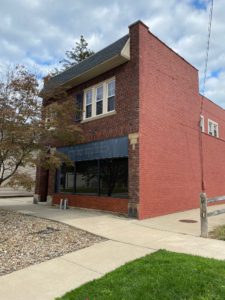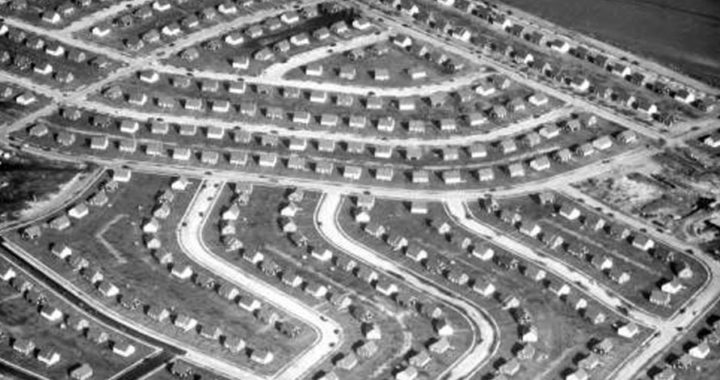On November 2, Bay voters will decide if the city’s zoning code should be amended to permit mixed use development in most of the city’s commercial areas.
While Issue 2 – the zoning overlay proposal – includes changes regarding setbacks, building height, size of commercial spaces, and other project elements, it is the possibility of mixed-use developments that has sparked the most discussion.
At its heart, Issue 2 is a green issue, and it reflects the tension in America between preserving the status quo or taking steps to adapt to evolving economic, demographic, and environmental conditions.
While the stakes in Bay are pretty low – there is relatively little commercial property in the city and the zoning overlay won’t even apply to all of it – the change itself is indicative of a nationwide movement away from sprawling, single-use suburban development towards a more efficient and sustainable model that favors higher population densities, a mix of housing options, nearby shopping districts, and a more economically diverse mix of residents.
The real issue is not mixed-use development, but is instead, the future of suburban areas like Bay Village. No wonder people feel threatened.
Though sections of Bay’s zoning code have been amended in recent years, the city’s current zoning ordinance was passed in 1954 and it largely reflects the community planning principles of the time, which called for strict separation of uses through zoning restrictions.

Traditional mixed-use building in Bay Village
The historic urban development pattern of high-density mixed commercial and residential districts, which had characterized cities for thousands of years, was prohibited in suburban communities across the United States. Instead, zoning codes segregated different uses in the hopes of reducing the crowding, noise, traffic, and bustle of urban neighborhoods.
But the spatial separation of houses from services that residents need – exacerbated by large lots and prohibitions against apartment buildings – resulted in low population density, which made public transit and small-scale retail enterprises economically unfeasible while requiring businesses to locate in a limited number of shopping plazas or office districts. As a consequence, suburban residents were forced to drive for virtually every errand.
It did not take long for the drawbacks of America’s sprawling, auto-dependent suburban development patterns to be recognized. In 1961, Jane Jacobs published her highly influential book, The Death and Life of Great American Cities, which contrasted the sterile, empty streets and indistinguishable shopping plazas of suburbia with the vibrant, pedestrian-friendly, and economically powerful city neighborhoods that had existed throughout the world for many centuries.
Successful cities, wrote Jacobs, depend on a diversity of buildings, people, and activities that ensure that neighborhoods are busy and economically active during all periods of the day. The mixing of commercial and residential uses in a neighborhood is crucial to economic and urban development.
Controversial at first, Jacobs’ insights about the importance of community-based planning and mixed-use development have become standard principles of contemporary urban planning.
In general, mixed-use projects are designed to be pedestrian-friendly, more dense, more efficient, and more sustainable. Mixed-use developments are scalable, ranging in size from a single building that contains both storefronts and apartments to village center-type developments that create integrated districts that combine shopping, offices, restaurants and living spaces.

High-density, pedestrian-friendly development in Cleveland’s Little Italy neighborhood
Planners, developers, and elected officials throughout the country have touted the benefits of mixed-use development, including increased economic viability; lower infrastructure cost; increased tax revenue; and creation of healthier, walkable places. Economic benefits have included revitalized downtowns, increased private investment, higher property values, and a better business climate.
Bay Village officials have noted that the proposed zoning changes will support the city’s 2016 citywide master plan by “diversifying housing options, establishing a pedestrian and bicycle friendly community, and creating a more vibrant village center.”
But across the nation, the real impetus for mixed-use development – and other tools meant to increase population density – is the realization that our current suburban development model is economically and environmentally unsustainable, and that change is inevitable.
Economist Noah Smith explains why change is necessary. “The upkeep on the vast sprawl of roads and other infrastructure was hellishly expensive, especially given the country’s excessive construction costs,” he writes. “New knowledge industries created clustering economies that made density more important for productivity, even as social media and a decline in crime made urban life more enjoyable. And the housing crash of 2007-8 showed that the model of sprawling ever farther outward from city centers had come to its limits — from now on, new Americans must mostly be put into existing urban spaces, which means density. These pressures have created both a rental crisis for renters and an affordability crisis for first-time homebuyers.”
As the economics of development are forcing a shift away from sprawling single-use neighborhoods, American developers are seeing growing demand for traditional walkable, transit-friendly, and compact communities. Both younger Americans and older Americans are looking for smaller living spaces in convenient, pedestrian-oriented neighborhoods that contain restaurants, shops, and offices.
Development in America is market-driven. If consumers are looking for denser neighborhoods that provide more nearby services and a greater range of housing options, developers will find a way to provide them, if not in Bay Village, then somewhere else.
In the end, writes Smith, America’s suburbs will become more diverse, both economically and demographically. Higher population densities will allow some types of more affordable housing, permitting college students, older Americans, and lower-earning Americans to live there in greater numbers. There will be fewer strip malls and a greater variety of housing options.
These changes won’t happen overnight and they won’t destroy America’s suburban communities. Though the nation’s suburbs – especially older, inner ring communities – will inevitably become denser, writes Smith, “the suburban way of life will be mostly preserved. And the fundamental reason it will be preserved is that Americans really really like living in the suburbs.”
October 13, 2021
https://www.mapc.org/wp-content/uploads/2017/08/Mixed_Use_Citizens_Guide.pdf
